

PM SHEHBA Z PRAISES TRUMP AS ‘MAN OF PEACE’ FOR ROLE IN GA Z A CEASEFIRE DEAL
g TRUMP THANKS PM AND ‘ FAVOURITE’ FIELD MARSHAL A SIM MUNIR FOR GAZA PEACE EFFORTS
g MEETS PALESTINIAN PRESIDENT, REAFFIRMS PAKISTAN ’S UNWAVERING SUPPORT FOR PALESTINIAN CAUSE
g PM REAFFIRMS PAKISTAN ’S SUPPORT FOR PALESTINE IN HIGH-LEVEL MEETINGS AT SHARM EL-SHEIKH PEACE SUMMIT
g HOLDS A SERIES OF KEY MEETINGS WITH WORLD LEADERS ON THE SIDELINES OF THE SUMMIT
g EMPHA SIZES URGENT NEED FOR COORDINATED INTERNATIONAL EFFORTS TO RESTORE PEACE IN THE REGION
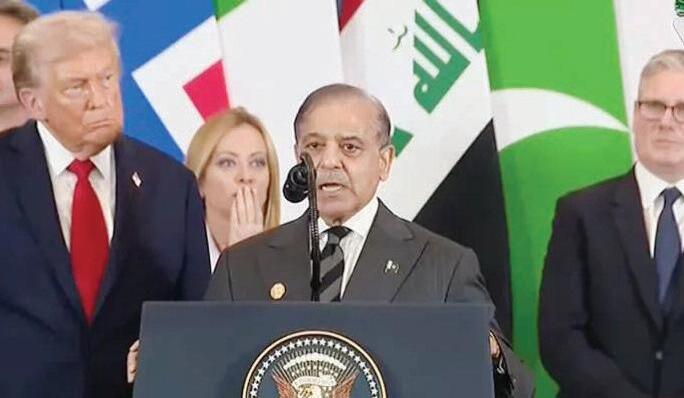
of
ings with
on the sidelines of the Sharm El-Sheikh Peace Summit, reiterating Pakistan’s firm support for peace in the region and solidarity with the people of Palestine In a significant trilateral interaction Prime Minister Sharif met with President Ilham Aliyev of Azerbaijan and Prime Minister Nikol Pashinyan of Armenia, where all three leaders expressed satisfaction over the recent ceasefire in Gaza The meeting marked a rare moment
of convergence between the two Caucasus nations and underscored the broader international commitment to de-escalation in the Middle East
The Prime Minister also held bilateral discussions with prominent global leaders, including King Abdullah II of Jordan, King Hamad bin Isa Al Khalifa of Bahrain UN Secretary-General António Guterres President Prabowo Subianto of Indonesia German Chancellor Friedrich Merz Spanish Prime Minister Pedro Sánchez, Italian Prime Minister Giorgia Meloni, and Saudi Foreign Minister Prince Faisal bin Farhan Al Saud
During these meetings Prime Minister Shehbaz Sharif emphasized the urgent need for coordinated international efforts to restore peace in the region He highlighted Pakistan s consistent stance on the Palestinian issue, reaffirming Islamabad’s unwavering diplomatic and moral support for the Palestinian people
Our position is rooted in justice and humanity said the Prime Minister adding, Pakistan will continue to stand by the Palestinian cause and support all peaceful initiatives aimed at ending violence and ensuring the legitimate rights of the Palestinian people
The meetings also included discussions on broader regional stability strengthening multilateral cooperation, and promoting dialogue to resolve longstanding conflicts

China to continue playing constructive role in improving Pakistan, Afghanistan relations: Foreign ministry
Justice M andokhail questions judges ’ role in 26th Amendment c ase
ISLAMABAD
S ta f f r e p o r t
Justice Jamal Khan Mandokhail on Monday questioned whether the Supreme Court judges hearing petitions against the 26th Constitutional Amendment could do so if they were its beneficiaries
The observation came during the hearing of multiple petitions challenging the amendment, which reshaped the process for appointing the chief justice of Pakistan curtailed the apex court’s suo motu powers and introduced constitutional benches (CBs) to hear constitutional matters
The eight-member CB, headed by Justice Aminuddin Khan, includes Justices Jamal Mandokhail, Muhammad Ali Mazhar Ayesha Malik Syed Hasan Azhar Rizvi Musarrat Hilali Naeem Akhtar Afghan and Shahid Bilal Hassan
At the outset, former Supreme Court Bar Association (SCBA) president Abid Shahid Zuberi reiterated the demand for a full court to hear the case arguing that only judges appointed before the 26th Amendment should be part of the bench He maintained that since the constitutional amendment itself was under challenge, the legitimacy of the CB’s composition was also in question

Justice Mandokhail asked whether judges could hear the case if they were beneficiaries of the legislation The chief justice was appointed under the 26th Amendment If the constitutional amendment had not been passed, Yahya Afridi would have become the chief justice as per seniority ” he remarked “If we are the beneficiaries can we then sit on the bench?
Justice Mazhar questioned who would hear the case if all judges were deemed beneficiaries, while Justice Ayesha Malik noted that Article 191A of the Constitution provided for the formation of constitutional benches but did not specifically address full courts
Zuberi argued that the CB had the authority to issue a judicial order for a full court, while Justice Hilali
observed that the bench could not issue such directions if its own jurisdiction was under question Justice Naeem Afghan remarked that under Article 191A constitutional benches were empowered to hear such matters and that the article effectively made the CB the full court for constitutional cases The hearing was adjourned until Tuesday The 26th Amendment passed in October last year, has been widely criticised by opposition parties, bar councils, and legal experts who contend that it undermines the judiciary’s independence The petitioners have urged the court to strike down the law in whole or in part, citing procedural flaws and constitutional violations
and have it be done constitutionally? He reiterated that the process was unconstitutional and said that the opposition was staging a walkout as “it did not want to be a part of this” He then proceeded to walk out along with other members of the opposition
Following the walkout KP Assembly Speaker Swati said that Gandapur had sent his resignation to the governor twice and also announced the same in
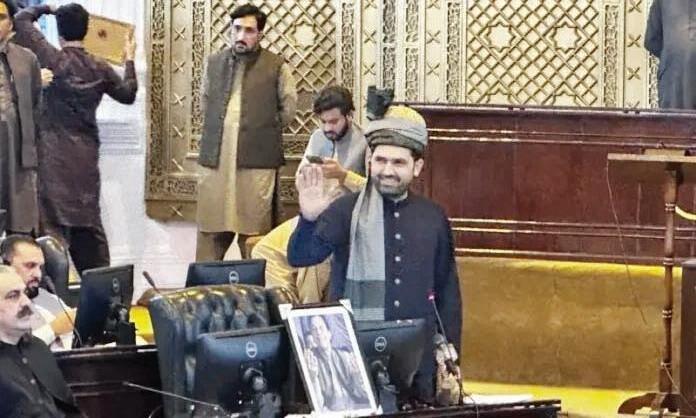

FiNANCe MiNiSter AurANgzeB BegiNS
WAShiNgtON AheAD OF iMF-WOrlD BANk
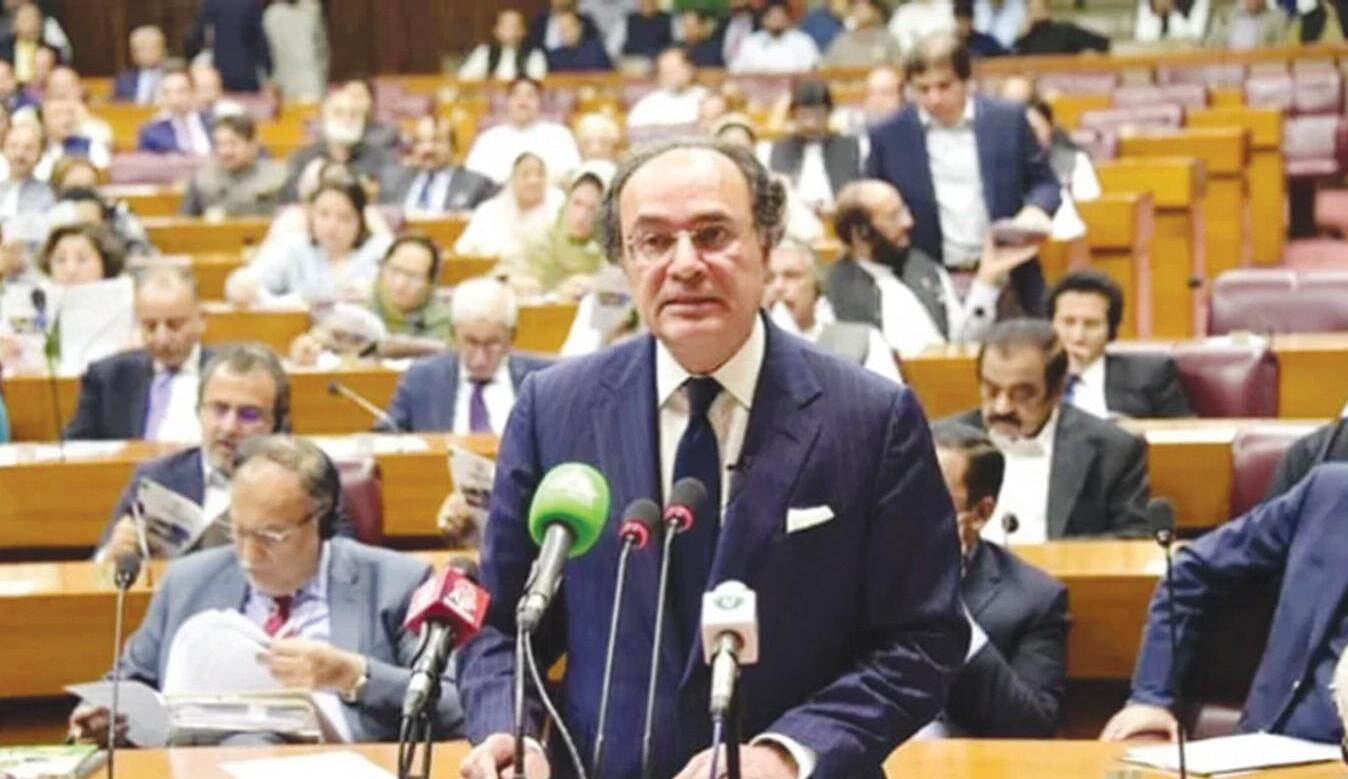
Pakistan Railways has initiated a broad infrastructure and revenue transformation programme combining safety modernization projects worth nearly Rs 35 billion with substantial non-fare earnings of Rs 13 547 billion generated through land leases over the past five financial years
According to official documents available with Wealth Pakistan the department is executing extensive track safety works, bridge rehabilitation, and inspection system modernization to enhance the safety and reliability of train operations nationwide
The large-scale safety projects cover critical sections of the network including Rohri–Khanpur Tando Adam–Rohri, Kiamari–Hyderabad, Khanewal–Shandara, Rohri–Sibi, and Sher Shah–Kundian, at a total estimated cost of Rs 31 829 9 million These works aim to improve track conditions sustain operational reliability and ensure smoother and safer train movement through Pakistan s major railway corridors In addition, track rehabilitation be-
tween Kotri Akhondabad and Dadu is underway with an allocation of Rs 2,321 million, reflecting the government’s commitment to restore and strengthen rail infrastructure sections affected by wear and tear Pakistan Railways is also reinforcing bridge infrastructure under a Rs 980 million project designed to strengthen weak bridges and ensure long-term structural safety On the technology front, the department is developing an E-Inspection Management System in collaboration with the Punjab IT Board aimed at digitizing and streamlining the inspection process This system will enable realtime monitoring, identify safety gaps, and support prompt remedial action, creating a more technology-driven and transparent operational framework
As part of its safety plan inspections of level crossings are also being carried out nationwide Of
Pakistan Customs foils bid to clear banned Indian tex tile machiner y at Karachi Por t
the effectiveness of the upgraded RMS in identifying prohibited imports routed through transhipment ports

condition with manufacturer plates and markings deliberately removed to conceal its true origin Customs authorities have registered a case of misdeclaration and initiated legal proceedings The assessed value of the seized goods stands at $85 107 Officials said the detection high-
In a separate operation Customs Enforcement Karachi, in coordination with Sindh Rangers, seized a large quantity of smuggled goods during a raid at Jodia Bazar The recovered items included 2 320 packets of foreign cigarettes 9 620 kilograms of betel nuts 140 packets of niswar and 3 485 kilograms of cutch blocks The seized goods have been taken into custody for legal action Authorities said the operations reflect FBR’s continued efforts to curb smuggling and protect the national economy
S audi investors eye seven key sec tors for investment in Punjab
She emphasized that Punjab’s natural and mineral resources hold vast economic potential which the government aims to harness in partnership with Saudi investors
The chief minister assured the visiting delegation that a dedicated provincial agency would act as the focal point for investor facilitation and that

COMMENT
O R M A L C Y returned to the twin cities on Monday evening after a violent confrontation between law enforcement agencies and Tehreeki-Labbaik Pakistan (TLP) protesters near Muridke But the uneasy calm that followed the six-hour operation only underscores the deeper malaise at the heart of this recurring national crisis
For years, the TLP has thrived on religious populism, transforming street agitation into a political weapon Its rallies often framed as moral crusades routinely paralyse cities, intimidate citizens, and have too often descended into mob violence Once again, the group s so-called “solidarity march” for Gaza turned violent leaving a police officer dead and several others including civilians injured The tragedy is familiar: an extremist outfit weaponising religion, and a state that still lacks a sustainable strategy to counter it
The Punjab police’s operation in Muridke may have been inevitable Law enforcers cannot simply stand aside when protesters hurl petrol bombs and bullets The state has a duty to protect lives and property But such operations must always be the last resort not the default response Heavy-handed crackdowns may clear roads and restore order for a few days, but they do little to address the deeper ideological problem that fuels the TLP’s street power
What Pakistan needs is not just stronger policing, but smarter policy The answer lies in systematic deradicalisation beginning with madrasah reforms civic education, and community engagement The young men who fill TLP rallies are often victims of ignorance and manipulation They have been taught that outrage is faith that violence is virtue Reclaiming these minds will take patience, credible religious scholarship, and an educational system that inoculates against extremism rather than breeds it
At the same time the state must communicate clearly and transparently in moments of crisis Confusion breeds fear In the absence of official information rumours about death tolls or the arrest of TLP

M A Niazi Editor Pakistan


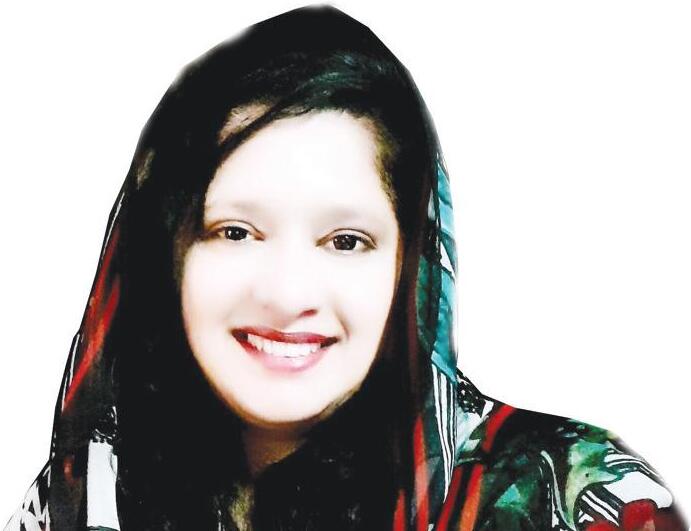
Tment may miss visual alerts or evacuation route signage In chaotic noisy relief camps hearing aids may malfunction or lose batteries If information is shared only in spoken or written form, people with cognitive or intellectual disabilities may struggle to understand instructions or adapt to changing conditions

NAT U R A L disasters are already harrowing for whole communities; for persons with disabilities, they often magnify pre-existing inequities in mobility, communication, health, and social inclusion In the United States the frequency and cost of extreme weather events have climbed sharply In 2023 alone the U S experienced 28 billion-dollar weather and climate disasters a new record imposing an estimated $92 9 billion in damage These calamities from hurricanes and floods to tornado outbreaks and wildfires represent not just economic loss, but human suffering, psychological trauma, and setbacks for already marginalized groups In countries like Pakistan the situation is even more serious because many communities live with fragile infrastructure weak emergency systems and limited resources for inclusive relief In Pakistan s recent floods, millions of people were displaced, entire villages submerged or cut off, and essential services disrupted For persons with disabilities whether permanent or temporary physical or sensory or cognitive the challenges are manifold and often ignored Disability in this context is not a single condition Some people use wheelchairs or other mobility aids; others have visual or hearing impairments; still others have cognitive or developmental differences, chronic health conditions, or temporary disabilities due to injury The diversity of needs means disaster responses must be equally nuanced When disaster strikes people are often urged to evacuate quickly But disaster conditions can block roads, render streets impassable, or leave debris that prevents wheeled devices or even walking across surfaces Floodwaters, damaged bridges, cracked roads, fallen trees all pose serious hazards especially for those with mobility limitations Even temporarily disabled individuals due to illness or injury might find standard evacuation routes impossible Early warning systems sirens, radio broadcasts, smartphone alerts may not reach people with sensory impairments Individuals with hearing loss may not receive audible alarms; those with visual impair-
the advent of AI Google reduced the value of libraries; however now ChatGPT has even surpassed Google Now, libraries are embracing advanced technologies like AI to address digital literacy, misinformation, and the complexities of generative AI In an era of information overload libraries can serve as trusted institutions that empower patrons to distinguish between credible and misinformation As digital content circulates at an alarming speed without accountability, libraries can offer training programs on digital and media literacy to inform citizens about critical thinking skills Libraries with physical space should remain relevant; however their design and functions must evolve despite the dominance of digital technology Modern libraries are providing collaborative spaces flexible layouts and experiential environments, contrary to traditional reading rooms This dynamic change can sustain its physical outlook COVID-19 has transformed the nature of modern libraries introducing various electronic gadgets such as self-service kiosks touchless technologies and adaptable spaces that prioritize health and safety But these kinds of experiments were introduced in advanced countries The uncertain future of libraries also involves questions of inclusivity and representation Libraries in ad-
Many persons with disabilities depend on caregivers personal assistants or specialized medical equipment (ventilators medication etc ) Disasters can sever these supports caregivers may themselves be displaced, or infrastructure (electric power, water, transport) may fail Disruption of medication supply, therapy sessions, or adaptive care can worsen a person’s health rapidly Prolonged displacement may further worsen the condition of person with special needs
Disaster survivors often experience acute stress grief, depression, and posttraumatic stress disorder (PTSD) For individuals with disabilities, these risks are magnified by isolation, loss of support networks, sensory overload communication difficulties and uncertainty about access to needed services In Pakistan emerging studies show floods correlate with anxiety depression and other psychological distress particularly among socioeconomically vulnerable and disabled populations
When homes are destroyed, many displaced persons must live in temporary camps for extended periods For persons with disabilities the inaccessibility of shelters ramps accessible toilets pathways makes life harder
Pakistan faces a particularly stark intersection of climate change, poverty, and disability exclusion In 2022, the country experienced its most devastating floods in memory: over 8 million people were displaced and billions in losses and widespread damage to homes crops and infrastructure This year country is facing another devastating flood effecting vast areas of Pakistan
It was noted that many flood-affected districts had limited pre-existing infrastructure for disability inclusion shelters often lacked ramps, accessible toilets, or tactile signage Research on migration and mental health following displacement in Pakistan indicates that children with autism spectrum disorder (ASD) and other neurodevelopmental conditions are disproportionately affected by disruptions in schooling, routines, therapy, and support networks In Khyber Pakhtunkhwa, studies of flood-affected children with physical disabilities highlight emotional and behavioral challenges including anxiety attention problems and social withdrawal In short: for persons with disabilities in Pakistan flood disasters often mean total disruption not just of shelter but of identity, care, dignity, and survival Designing disaster systems that truly include persons with disabilities requires both structural shifts and practical measures Below is a framework of recommendations: Establish participatory planning committees that
vanced nations, such as the UK, Canada, and the USA, have responded to community needs by offering materials in Indigenous languages to serve the diverse populations Such initiatives highlight the importance of libraries and ensure services that attract communities of diverse geographic backgrounds Digital services have become an essential part of modern libraries, particularly for individuals from marginalized backgrounds It is the responsibility of libraries to offer both online and offline services providing them with equitable access to information Despite these services libraries around the world, particularly those in developing countries, face daunting challenges such as staffing shortages, shrinking budgets, and rapid technological change, which place immense pressure on institutions It is assumed that the future of libraries is uncertain; however uncertainty should not be mistaken for decline Still libraries remain crucial public institutions but their relevance relies on their willingness to adapt to technological and social transformations, embracing digital transformation and reimaging physical spaces, and listening closely to patrons Libraries can reinvent themselves in the uncertain future It is the responsibility of communities stakeholders and governments to make libraries even more essential
The writer is the Deputy Director of the Library at the Institute of Strategic Studies, Islamabad

Artificial Intelligence (AI) and machine learning have emerged as transformative forces that could redefine the functions of libraries In the past, people preferred classification and cataloging to search and retrieve the information they desired, but now they rely more on personalized recommendations and chatbots The use of AI in library services has brought about tremendous revolutions, particularly in the areas of chatbots, a human-centered approach, and digital literacy
Abid HussAin

A silent epidemic
PO LY C Y S T I C ovary syndrome is not a rare diagnosis confined to academic clinics It is one of the most common endocrine disorders
in obesity insulin resistance menstrual irregularity and psychological distress all of which track closely with PCOS Several forces explain why the condition is both common and under recognised in Pakistan South Asian women are genetically predisposed to insulin resistance and central obesity and urbanisation dietary westernisation and sedentary lifestyles magnify this risk South Asian women also develop type 2 diabetes four to seven years earlier than women of European ancestry, and often at lower body mass indices Around 50 to 70 percent of women with PCOS show insulin resistance Despite this cultural attitudes discourage open discussion of reproductive symptoms such as irregular menstruation or hirsutism Surveys suggest more than 60 percent of Pakistani women first resort to traditional remedies before consulting a doctor for reproductive complaints Primary care services do not routinely screen for menstrual disorders and frontline clinicians are often not well trained in applying international diagnostic criteria Consequently, women often present late, usually when infertility or overt metabolic disease emerges
The clinical impact of PCOS extends far beyond irregular cycles Endocrine dysfunction drives insulin resistance, prediabetes, type two diabetes, dyslipidemia and the metabolic syndrome Reproductive complications are profound; PCOS is implicated in nearly 40 percent of cases of anovulatory infertility in South Asian women Women with PCOS experience repeated cycles of failed conception attempts and undergo invasive fertility treatments that impose significant economic and emotional strain Mental health consequences are severe International data show up to 40 percent of women with PCOS suffer depression and 34 to 57 percent report anxiety Pakistani studies mirror these findings, with one reporting that 45 percent of women with PCOS screened positive for depression compared with 18 percent in controls Visible symptoms such as hirsutism acne and weight gain further erode confidence and expose women to shaming compounding emotional distress The social consequences are no less damaging Menstrual problems and infertility often carry stigma, and reproductive failure is frequently framed as a woman’s failing rather than a medical condition Financial constraints and restricted female autonomy limit access to diagnostic testing and long term management Women conceal or minimise their symptoms to avoid judgment, which lowers measured prevalence and creates the illusion that the problem is smaller than it is This under reporting feeds back into public health planning which in turn underestimates need What results is a hidden epidemic in which cultural silence, poverty and medical neglect reinforce one another Diagnosing PCOS is conceptually straightforward but operationally difficult Criteria require combinations of menstrual
Research

PCOS not merely as an individual reproduc-
irregularity hyperandrogenism and ovarian morphology Yet there is variation between guideline sets, and differences in clinician interpretation Ultrasound and biochemical testing are unevenly available especially outside urban centers As a result prevalence estimates vary depending on whether studies use self reported surveys biochemical screening or ultrasound criteria This methodological inconsistency complicates national planning Moreover, metabolic risks often appear even in women who lack the full reproductive phenotype arguing for broader case finding approaches in primary care rather than relying solely on symptomatic presentation Treatment is effective but unevenly distributed Lifestyle modification is the foundation; weight loss and physical activity can restore ovulatory cycles and improve metabolic outcomes Metformin enhances insulin sensitivity regulates cycles and facilitates ovulation Hormonal contraceptives are useful for menstrual regulation and reducing an-
drogenic symptoms For infertility ovulation induction agents and assisted reproductive technologies are standard But access is limited Few women receive structured lifestyle programs or long term endocrinological follow up Fertility care is concentrated in urban private centers and imposes catastrophic out of pocket costs for many families The gap between evidence based interventions and their availability widens health inequity PCOS is also under researched on a global scale Although described decades ago research has been concentrated on reproductive outcomes in high income countries Few large scale longitudinal studies from low and middle income nations have mapped the long term metabolic and cardiovascular sequelae of PCOS This is a critical gap because the South Asian phenotype differs markedly from that of women of European descent Without robust local data health systems cannot design screening or prevention strategies tailored to Pakistani women Global Burden of Disease data in 2021 estimated that PCOS accounts for more than 1 5 million disability adjusted life years worldwide with middle sociodemographic regions including South Asia showing the fastest growth in prevalence and disability The way forward requires multipronged public health strategies Primary care providers should be trained in pragmatic diagnostic algorithms that combine clinical features with affordable tests School based education about menstrual health can reduce stigma and encourage timely help seeking Training for general practitioners and gynaecologists must include early detection of metabolic risks and integration of mental health support Policy makers should treat
Europe can build its own social media


new International Digital Strategy is likewise skeptical that the bloc can wean itself off Big Tech instead calling for collaboration with the U S to address its dependency But this stance ignores the emergence in recent years of social-media sites built on decentralized, open protocols These new platforms are fundamentally different, in principle and design, from American behemoths like Instagram and X They restore control to users reduce gatekeeping and encourage innovation
Perhaps the best example is the AT Protocol, which serves as the foundation for Bluesky, a fast-growing platform that has amassed nearly 36 million users Designed for interoperability the AT Protocol allows users to own their data and control the algorithms that curate their feeds Anyone can develop apps on the decentralized system which means that no single company can dominate and users can easily move between platforms, taking their followers and content with them That means they never have to start over from scratch
This dedication to pluralism helps break Big Tech s monopoly power over social media which has stifled European innovation for decades Europe-based firms have already used the AT Protocol to create platforms like SkyFeed and Graysky
Others are trying to protect and build out this social ecosystem free from Big Tech s grip The Free Our Feeds campaign is working to ensure that the underlying infrastructure continues to be governed in the public interest And Eurosky is a new pro bono effort by a group of European technologists, including myself, to create tools (such as built-in content moderation aligned with EU laws) and infrastructure on the AT Protocol that help European developers build and scale platforms that can rival the social-media giants Open protocols are not some utopian project They are poised to upend the status quo of social media creating a more democratic digital world That is why European policymakers should designate these social-networking frameworks as critical infrastructure and invest in developing them
The online world has gone astray, with America’s tech sector largely calling the shots on how it is developed and used Europe can help return the internet to its roots by fostering a social-media ecosystem built for pluralism not polarization but it needs political leaders who are willing to fight for a new, truly social digital infrastructure Sebastian Vogelsang is developer of flashes a photo- and video-sharing app built on the AT Protocol PR OJECT SYNDICATE s e B

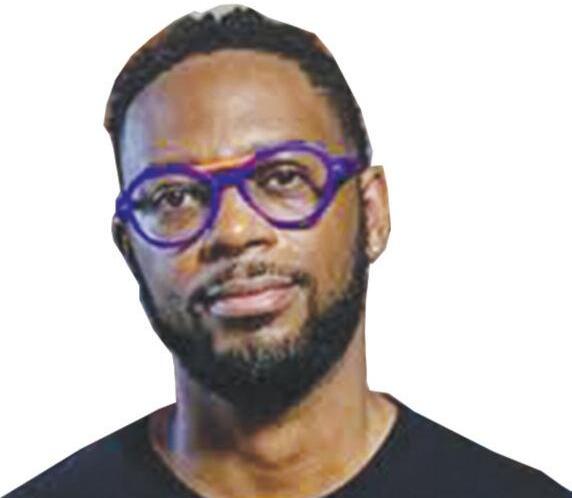
WBunny took the opportunity to respond to his detractors in another powerful language of the unheard: satirical humor
Although humor can seem trivial to some we should not underestimate its power to shift cultural agendas Contempt toward elites in the form of satirical mockery can be cathartic and a demonstration of solidarity for those of lower status Humorists can have a deep impact on the public imagination Shifting public imagination is one reason repressive leaders fear comedic critique
Satirical humor is one of the remaining glimmers of hope we have left in the fight against authoritarian rhetoric Satire is the sharpest instrument of free speech,
pressured networks to cancel once he became president The show poked fun at political leaders like Putin using unflattering puppets
President Donald Trump is also known to oppose negative coverage often trying to suppress it through lawsuits We witnessed the suspension of Jimmy Kimmel and the cancellation of Stephen Colbert Trump has also publicly pressured networks to fire Jimmy Fallon and Seth Myers
The satirist plays an important role in political society When leaders veer toward authoritarian rhetoric, the satirist must go to work to make sure our public language does not get swallowed by the party line In short, satire helps preserve the language of critique itself
The sharpness of satire that Shenderovich alludes to can be effective for cutting through the fog of fear and confusion that accompanies authoritarian rhetoric As a humor scholar, it does not surprise me that Trump s thin-skinned reactions to critique would target comedians Satirical humor in particular has historically functioned like a disinfecting light Executive orders and irresponsible
speech such as baseless claims about Haitians eating neighborhood pets may remain relatively unaffected in the public imagination despite pushback on CNN, Meet the Press, or Face the Nation But the sting of satirical laughter is difficult to ignore This is probably why people like Kimmel Fallon and Colbert get under his skin Perhaps even more frustrating to authoritarian figures is the way humor can undermine attempts to break their political enemies spirit by providing hope Consider an example from a particularly dark point in history Viktor Frankl described humor as a weapon in the fight for self-preservation in his powerful memoir Man’s Search for Meaning He writes It is well known that humor more than anything else in the human make-up, can afford an aloofness and an ability to rise above any situation, even if only for a few seconds ” The context for Frankl’s statement is the concentration camp For him humor was a lifeline that helped people hang onto their humanity in the midst of inhumane treatment by their Nazi captors Trump s rhetoric is, without question, intended to strike fear into the hearts of his political enemies The vagueness of his language is also a way of widening the scope to include anyone who disagrees with him Think of his threat to have Attorney General Pam Bondi go after a journalist for hate speech
Satirical humor at its best is a powerful force for disrupting authoritarian rhetoric Satire shows no reverence for the kind of linguistic authoritarianism on display in attempts to expunge the nation s parks and museums of racial memory or define antifascism as domestic terrorism Rather, it disregards the social niceties we associate with social interaction and explores the logic behind our
HITLER BRINGS PEACE TO ISRAEL
oshaz Fatima
The hidden burden of PCOS in Pakistan


Fear and uncer tainty grip US Pakistanis as Trump intensifies
depor tation drive
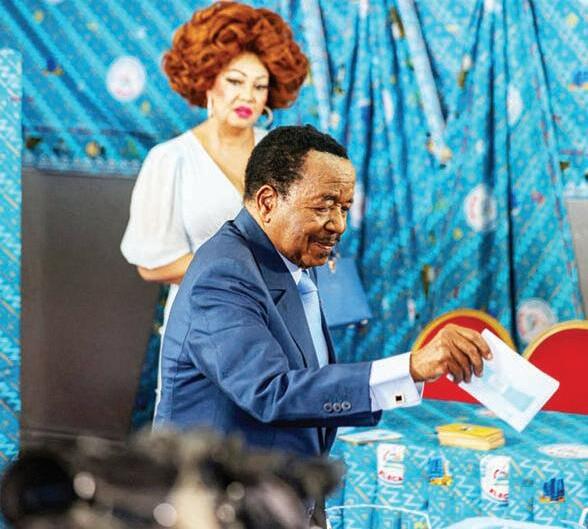






CORPORATE CORNER


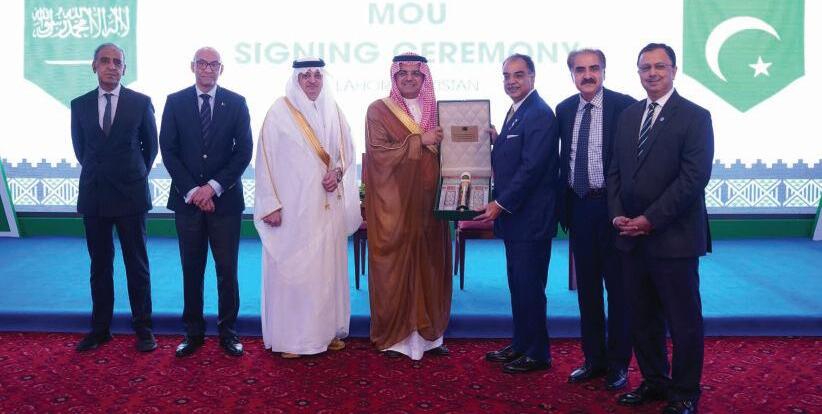
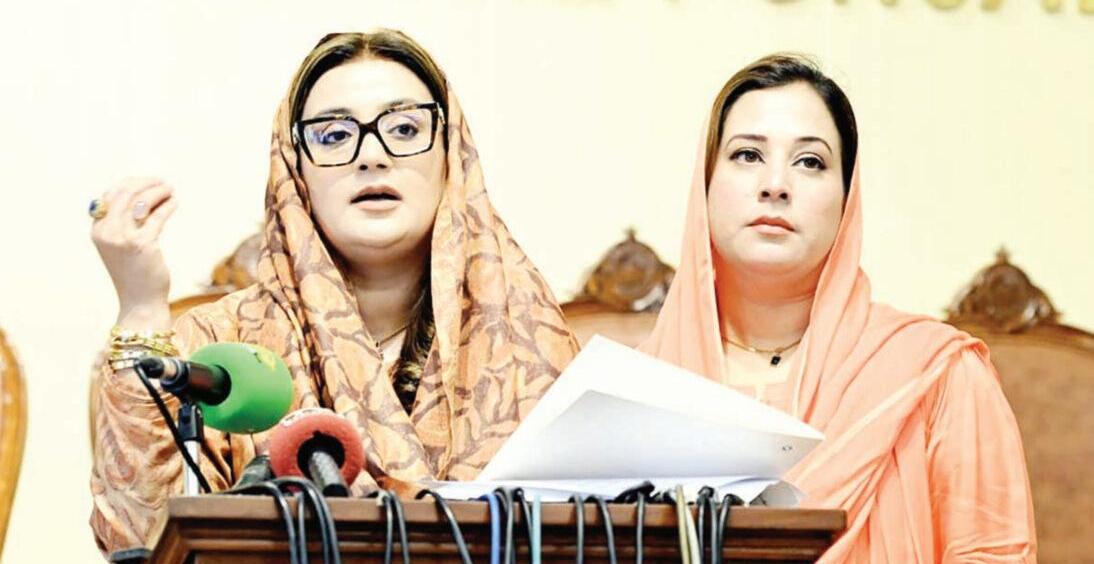
Punjab Minister for Information and Culture Azma Bokhari has said that Gandapur s chief ministership has fallen prey to a domestic dispute between two women, while the new KP Chief Minister is not a “Parchi” but a “Farshi” who secured the position by constant greetings and flattery She remarked that Usman Buzdar was appointed on the orders of Begum, while Gandapur has been removed on the directions of ‘Baji,’ exposing the real political face of the party She said that a fake election took place in KP today the resignation of one Chief Minister was not even accepted, yet another was elected She added that Sohail Afridi delivered nothing but loud boasts and made no mention of the province’s development Azma Bokhari clarified that South Punjab receives an equal share in every development project in Punjab and for Maryam Nawaz there is no Central or South Punjab only one Punjab She expressed these views while talking to the media outside the Punjab Assembly She said that the Punjab government has almost completed the survey of flood-affected areas and the process of providing financial assistance to affected families will begin very soon She added that rehabilitation work in
Patients’ Aid Foundation and Faysal Bank Host “Bike A Cause 2025”

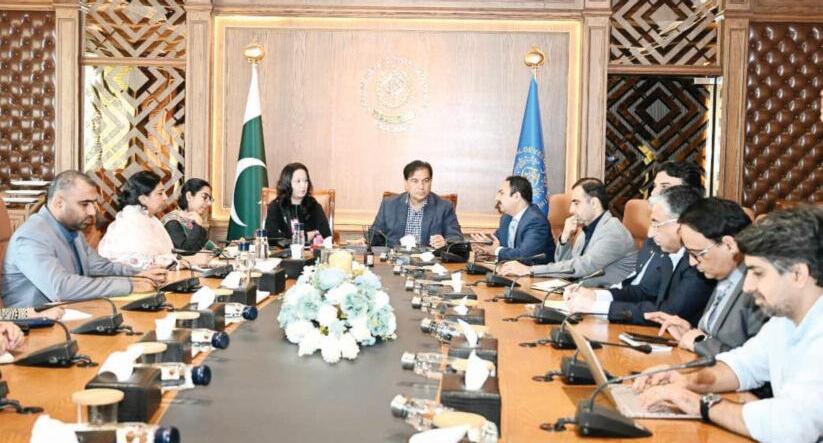
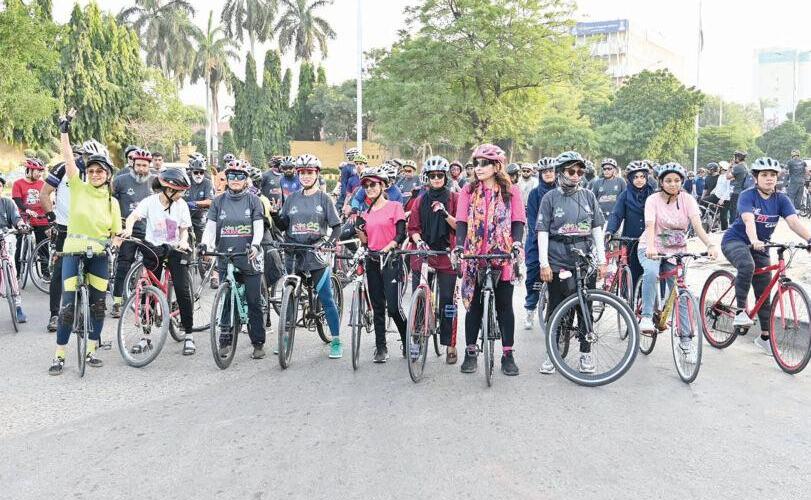
cling event dedicated to raising awareness about breast cancer and generating funds to support free, state-of-the-art treatment for underprivileged patients at Jinnah Postgraduate Medical Centre (JPMC), Karachi Cyclists from all over the city rode to JPMC early in the morning in solidarity with women fighting Breast Cancer For the past 35 years Patients Aid Foundation has been at the forefront of transforming JPMC into a world-class tertiary healthcare institution providing free, world class healthcare to patients from Karachi, interior Sindh, and Balochistan Through the generosity and continued support of its donors Patients’ Aid has built and powered several lifesaving facilities at JPMC At the event Mr Mushtaq Chhapra- Chairman Patients Aid highlighted the Foundation s expanding efforts for fighting breast cancer in Pakistan A classic example of it is the upcoming “Bilquis & Abdul Sattar Edhi Breast Cancer Bay” exclusively for women and to be run by women that will provide comprehensive breast cancer care to 160 underprivileged patients every day
The present transformative efforts of Patients Aid include the upgradation of the Oncology Department, Tomotherapy machines, Mammogram, PET CT and other services, all completely free of cost
The event also focused on the importance of awareness and early detection With 1 in 9 women in Pakistan at risk of developing breast cancer the call for open dialogue self-examination
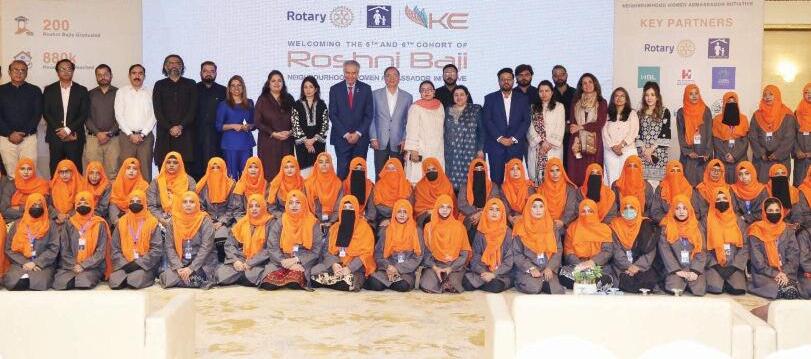


POLICE FILE TERRORISM CASE AGAINST
TLP AFTER DEADLY MURIDKE CL ASHES

Cour t extends Imaan Mazari’s interim bail until Oct 16
ISLAMABAD n e w s d e s k
The Anti-Terrorism Court in Islamabad has extended the interim bail of human rights activist Imaan Mazari her husband Hadi Ali Chattha advocate and colleague Mustafain Kazmi in a case related to a physical altercation with Islamabad High Court Bar President Wajid Gilani During the hearing presided over by Judge Abul Hasnat Muhammad Zulqarnain, the court expressed frustration at the police for failing to submit the case record Owing to the delay, the court barred the arrest of the accused until October 16 when the bail applications will be reviewed again The case against Imaan Mazari Hadi Ali Chattha and others was registered at the Secretariat Police Station under terrorism-related provisions Separately, in another case at the District and Sessions Court Islamabad, Imaan Mazari and Hadi Ali Chattha appeared in connection with the ongoing proceedings regarding a controversial tweet The hearing overseen by Additional District and Sessions Judge Muhammad Afzal Majoka faced further complications as no legal representative appeared on behalf of Hadi Ali Chattha Chattha informed the court that he had been unable to secure counsel for his defence In response, Judge Majoka directed the Sessions Judge to appoint a state counsel to represent him The court then adjourned the proceedings until October 16 Both cases remain under judicial scrutiny with the next hearings expected to determine the future course of the legal proceedings against Mazari and her associates
Zardari urges stronger trilateral trade ties between Pakistan, Türkiye and A zerbaijan
ISLAMABAD n e w s d e s k
President Asif Ali Zardari on Monday called for stronger trilateral cooperation between Pakistan, Türkiye and Azerbaijan, stressing the need to expand trade, connectivity and economic integration across the region Speaking at a meeting with Turkish Grand National Assembly Speaker Dr Numan Kurtulmus and Azerbaijan s Milli Majlis Chairperson Sahiba Gafarova at Aiwan-e-Sadr the president said Pakistan attached
Pakistan stands with world in building a safer, sustainable future: Dar
Deputy Prime Minister and Foreign Minister Senator Ishaq Dar on Monday reaffirmed Pakistan s solidarity with the international community in working towards a safer more resilient and sustainable world emphasising the urgency of collective efforts to reduce disaster risks
In a message marking the International Day for Disaster Risk Reduction, the foreign minister said Pakistan remained committed to global initiatives aimed at lowering vulnerability and losses caused by natural hazards and climate-induced disasters
Dar noted that reducing disaster risk was not only a humanitarian imperative but also a prerequisite for achieving sustainable development and strengthening climate resilience
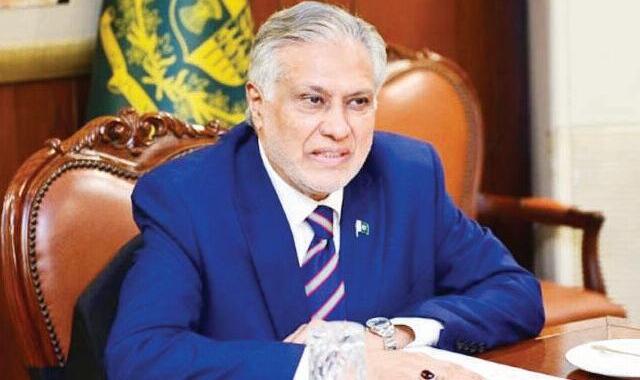
Recalling the country s experience with recent climate catastrophes, he said Pakistan had faced devastating floods, recurring droughts and extreme heatwaves in recent years “The intense monsoon rainfall that caused widespread loss of lives and livelihoods this year is yet another reminder of the immense burden Pakistan continues to bear due to climate change, he said, according to a statement issued by the Foreign Office He said these experiences had reinforced the government’s resolve to adopt proactive technology-driven and inclusive approaches to disaster risk management Dar further said Pakistan s disaster management policies were guided by the National Disaster Risk Reduction Strategy 2025–2030 which promotes a comprehensive multi-hazard approach focusing on prevention preparedness and resilience-building across federal, provincial and local levels He added that the country’s ini-
tiatives were aligned with the Sendai Framework for Disaster Risk Reduction (2015–2030), which prioritises early warning systems, anticipatory action, and the integration of risk reduction into development planning Leveraging innovation and technology to better anticipate and manage emerging risks is at the heart of our strategy, he stated
The deputy prime minister also called on the international community to deepen cooperation and enhance financial and technological support for developing countries, enabling them to better cope with the accelerating effects of climate change
16,000 Hajj seats still available under private scheme as Oc tober 17 deadline approaches


